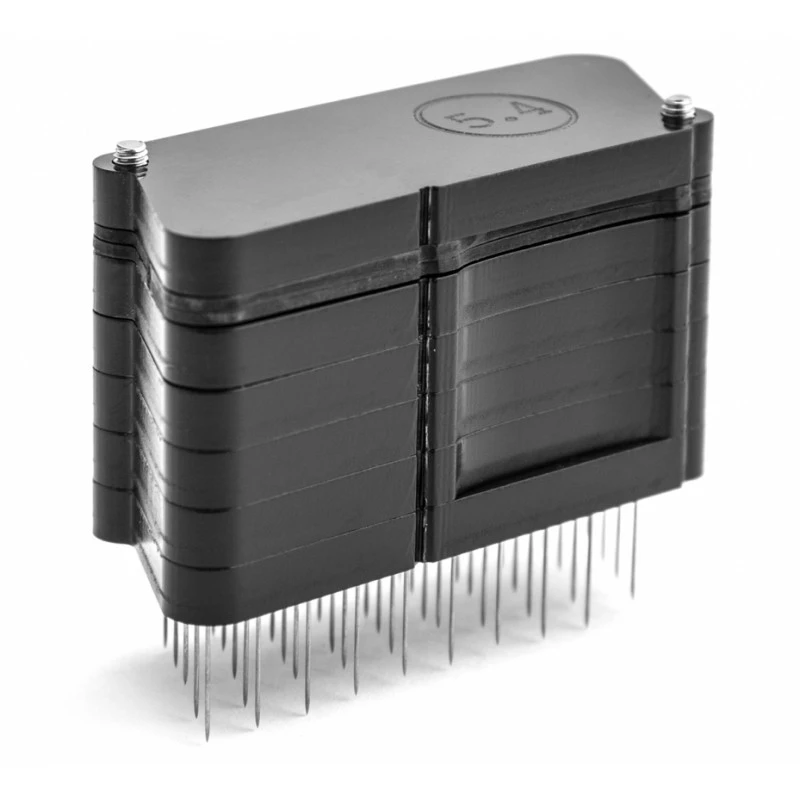What is needed to perform the test? You need a rhomboid shape (template) like those depicted below that can be made of plastic or metal or other materials (see figure opposite). Its size should be such that it covers 10×10= 100 cells. Considering that there are commercially available wax sheets with different cell sizes and especially that these may vary with the various brood cycles, it can be said that approximately the rhombus should have each of the sides of 5.4-5.5 cm; the oblique side should have an inclination of 60°. It should be pointed out that, for business uses, even if the rhombus were a few mm smaller or larger it would not be a big problem as long as the same template is always used for measurements between the different families.As an alternative to the template, one can proceed to mark with a marker the first cell on the upper left and from there count 10 cells on the right; then count 10 cells diagonally and then proceed to mark the cell on the lower right (see figure opposite). In this way the perimeter of the 10 x 10 rhombus can be circumscribed and then to be punched. A pin preferably with a rather large diameter (1-1.5 mm). Steps in the procedure Select and mark a honeycomb of brood operculated as compactly as possible. Prefer central combs of the nest so as to reduce any effects related to different brood temperatures. On the selected honeycomb, find a tendentially central area in which there are not many empty cells (the latter should not exceed 10 percent) and place the rhomboid outline on that area. Mark with a marker (e.g., white UniPosca) the corners of the template so that on subsequent days the area to be checked can be identified. Alternatively, if the template has a curved edge that rests directly on the brood, light pressure can be applied so that the entire perimeter of the template is imprinted on the brood. Take note of the number of already empty cells that are inside the template. Proceed to punch all operculated cells found within the template. Reposition the honeycomb inside the nest (preferably in the same starting position). Return after 24 h and count the cleaned (empty) cells in the previously marked area. Make calculations using the following formula Values above 90 % are considered good. Values below 70 % may be indicative for considering queen replacement. For greater reliability it is advisable to repeat the test 2 times throughout the season avoiding periods of heavy importation ( the best periods may be at the beginning and end of the season). Our PIN TEST has 50 perfectly aligned needles for exact drilling of 50 broods simultaneously. It is designed for standard 5.4 mm cells. It kills larvae within the brood, and allows you to check the cleaning behavior of the bee colony. Watch the video for proper use HOW TO USE In the operculated brood go and locate that portion where the pupae still have pink eyes, perform the test then mark the entire outline with a non-toxic marker to highlight and outline the piece that has been punctured and be able to easily locate it in the review. Then the first review should be done at 6 hours, checking the percentage of cells that have been cleaned. Ideally, they should have removed more than 80 percent of the brood.



